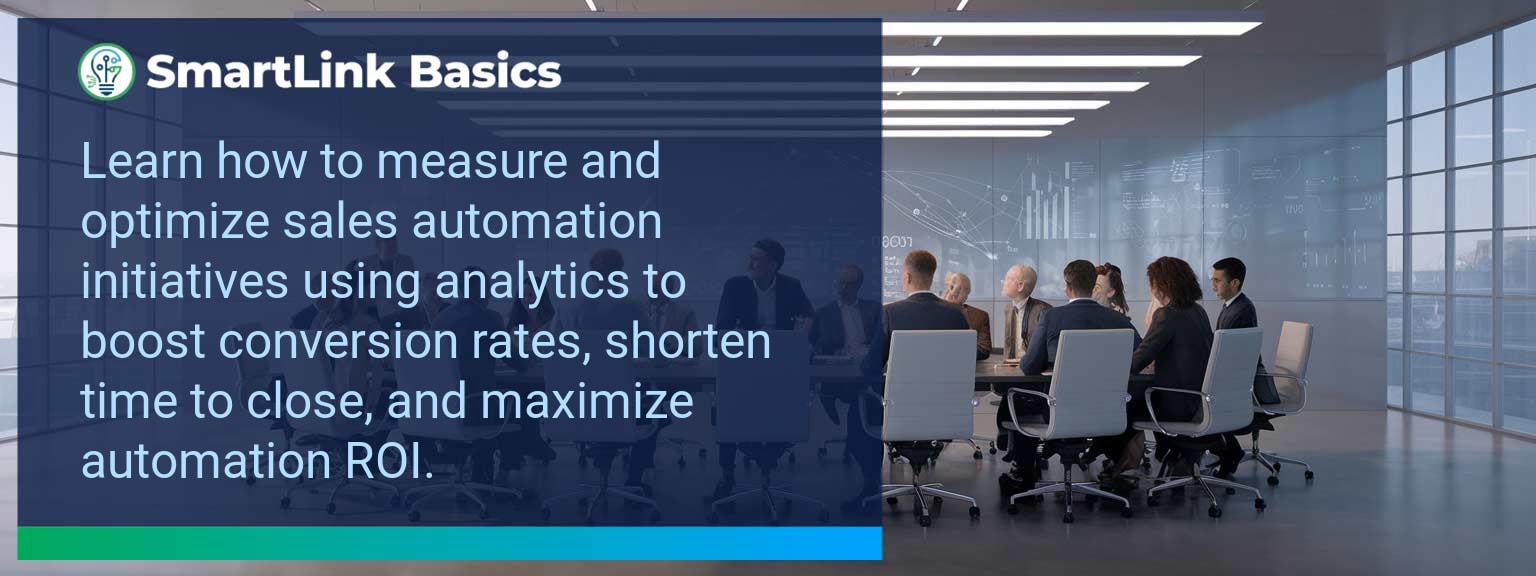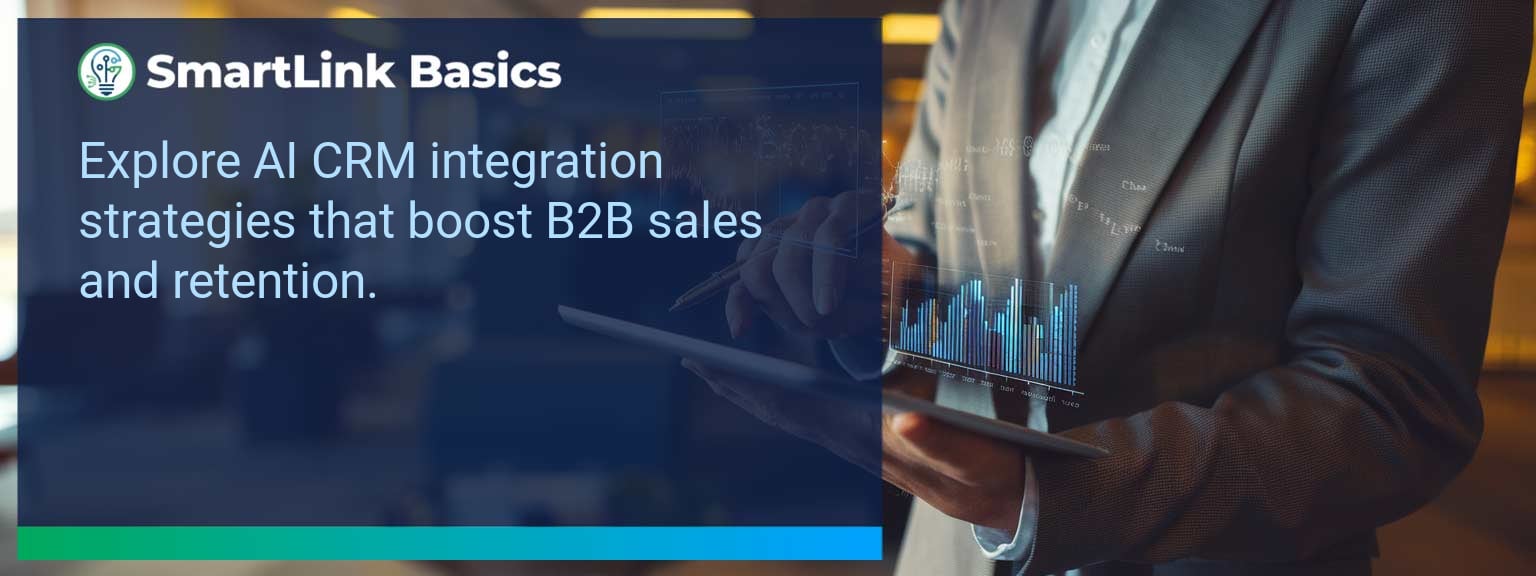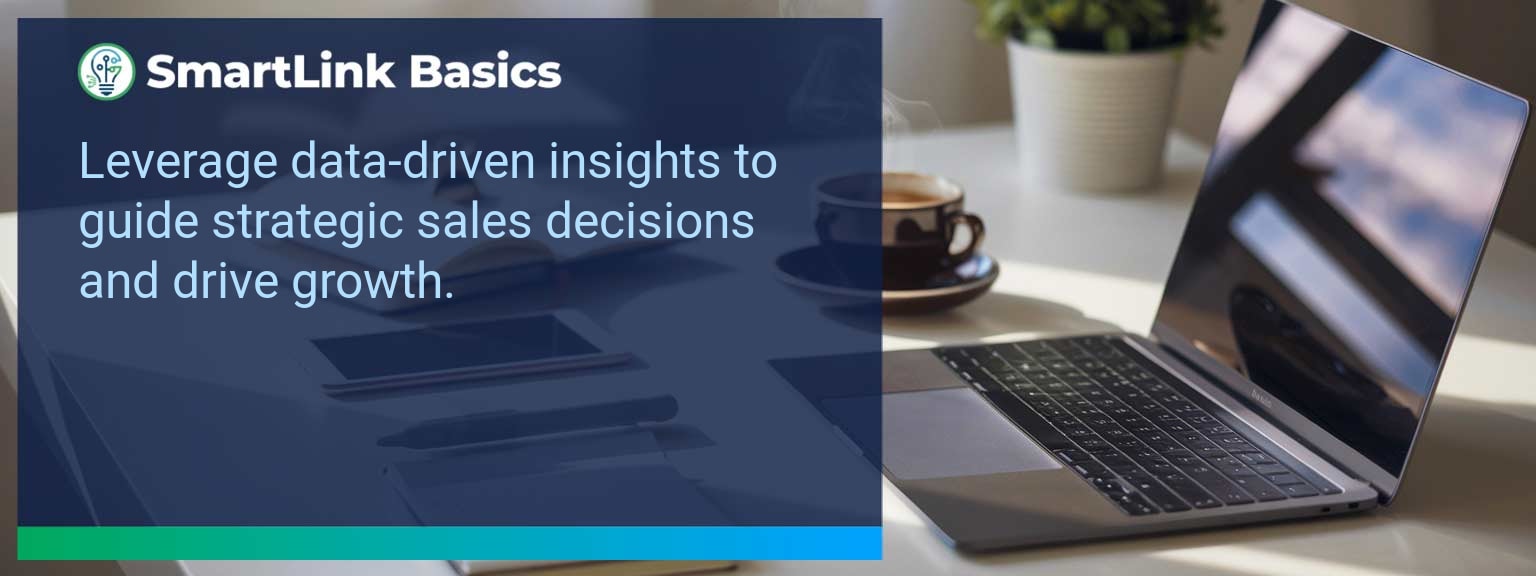Industry data shows that organizations adopting AI-driven automation achieve cost reductions of up to 30% while accelerating sales cycles by 20% or more (McKinsey, 2024). For sales leaders, AI automated workflows now define competitive advantage, enabling teams to reallocate time from repetitive tasks to high-value engagements. At SmartLink Basics, we help decision-makers implement these systems strategically, ensuring they integrate with existing revenue operations. In this article, you’ll see how AI automated workflows power business outcomes, the common obstacles that slow adoption, and practical steps to optimize processes. You’ll walk away with proven examples, a 90-day action blueprint, and measurable KPIs to track results.
- Automate repetitive administrative and CRM updates with AI.
- Integrate machine learning to personalize outreach at scale.
- Streamline approvals, quotes, and contract workflows for speed.
- Use predictive analytics to prioritize sales opportunities.
- Track adoption and performance with targeted metrics.
AI Automated Workflows: What Changed and Why It Matters
AI adoption has shifted from experimental to operational, making automated workflows a standard in high-performing sales organizations. The real advantage lies in combining workflow automation with artificial intelligence workflows to optimize every step of the revenue process. Sales leaders now use AI to synchronize touchpoints, reduce manual inputs, and ensure faster execution. For example, a B2B SaaS leader introduced automated lead enrichment and routing, cutting qualification time by 60%. Actionable insight: Audit processes for time-intensive handoffs and apply AI where repeatability is high.Redesign the Revenue Operating System With AI Automated Workflows
ICP, Segmentation, and Targeting AI-enabled segmentation uses historical wins, firmographic, and behavioral data to dynamically update ICP profiles. This ensures targeting precision without quarterly re-work. Pipeline Architecture Automated workflows push opportunities through the right stages based on engagement signals. AI flags at-risk deals for intervention. Plays and Messaging Integrated automation tools deliver personalized sequences based on buyer activity, increasing relevance at every touchpoint. Operating Cadence AI schedules follow-ups, forecast calls, and account reviews based on actual pipeline movement rather than static calendars. Actionable insight: Implement automation that adapts in real-time to both internal and buyer-driven events.Common Obstacles To Achieving Seamless Automation
The most frequent challenges are fragmented systems, inconsistent data quality, and cultural resistance. Without a unified data layer, automation amplifies errors rather than solving them. Coca-Cola Europacific Partners reported needing a full data governance upgrade before AI could improve sales workflows. Leaders must first assess infrastructure readiness and train teams to trust AI-influenced recommendations. Actionable insight: Before deployment, establish clean data practices and a single source of truth.Implementing AI To Optimize Workflows
Effective deployment of AI process optimization starts with mapping current-state processes, identifying friction points, and matching them with automation tools. For example, automating proposal generation based on CRM opportunity data can reduce turnaround from three days to one hour. Solutions combining business process automation platforms with machine learning integration enable continuous performance improvement. Actionable insight: Pilot in one high-impact stage, measure, and then expand.Tangible Benefits From Automated Processes
The benefits extend beyond time savings — sales leaders gain a scalable system. Tangible outcomes include faster quote-to-close, higher lead conversion, and better forecast accuracy. A manufacturing firm implemented AI-assisted order processing and cut errors by 40%, improving on-time delivery rates. Actionable insight: Track both speed and accuracy to measure workflow automation effectiveness.Metrics That Matter
| Category | Metric | Definition | Target |
|---|---|---|---|
| Leading | Workflow Completion Rate | % of automated sequences executed without manual intervention | 95%+ |
| Leading | AI Suggestion Adoption Rate | % of AI-generated action recommendations executed by reps | 80%+ |
| Lagging | Cycle Time Reduction | Decrease in time from lead entry to closed-won | 20%+ |
| Lagging | Revenue Per Rep | Average sales revenue generated per sales rep per quarter | +15% YoY |
| Quality | Automation Error Rate | % of workflows that trigger incorrect outcomes | <1% |
| Quality | Customer Satisfaction Post-Automation | Average CSAT score after automation implementation | ≥ 4.5/5 |
Innovations And Next Steps For AI Automation
Emerging capabilities like AI-generated playbooks, intent-driven dynamic routing, and integrated AR for virtual product demos are shaping the next wave of sales automation. Companies integrating these tools early will outpace competitors in speed and personalization. Actionable insight: Stay ahead by testing emerging automation features quarterly and aligning them with evolving buyer expectations.Get the 90-day plan, coaching rubric, and dashboard template to operationalize AI in your enablement program.
Turning AI Automation Into a Revenue Multiplier
AI automated workflows are now a strategic lever for predictable, scalable growth. This guide outlined current applications, adoption challenges, a 90-day execution plan, and measurable success criteria. To make automation pay off, sales leaders should integrate tools into one cohesive operating system and review results monthly for continuous improvement. Access more AI-driven sales enablement resources from SmartLink Basics to design a high-performance automation strategy. Strong sales leadership determines whether a team consistently exceeds targets or struggles to maintain momentum. At SmartLink Basics, we focus on strategies that equip leaders to not only direct, but also inspire their sales teams to peak performance. Effective Sales Leadership Strategies today require a precise blend of data-driven decision-making, advanced coaching techniques, and operational discipline. This article details how you can redefine your leadership playbook, apply predictive analytics to anticipate results, and create a culture where excellence becomes standard. You will gain a practical framework for overcoming leadership challenges, implementing actionable solutions, and measuring the metrics that truly matter to sustained sales growth.- Clarify vision and establish a compelling sales mission.
- Adopt predictive analytics to guide decision-making.
- Build a disciplined, repeatable sales operating cadence.
- Invest in targeted sales coaching techniques.
- Track both leading and lagging performance indicators.
Overcoming Common Leadership Hurdles
High-performance sales leadership is as much about removing friction as it is about driving results. Leaders often face hurdles such as unclear role expectations, inconsistent sales management practices, or a lack of accountability measures. These gaps can weaken team motivation and slow sales growth. For example, if a sales leader allows pipeline reviews to drift in format or frequency, data becomes unreliable, and forecasting accuracy suffers. The actionable approach here is to establish standard operating procedures for every core sales management activity and align them with business goals. Consistency is the first step toward scalable improvement.Implementing Proven Leadership Strategies
Sales leadership strategies work best when anchored in a structured revenue operating system. Start with clearly defined Ideal Customer Profiles (ICPs), segment priorities, and targeting principles that guide every salesperson’s efforts. For instance, refining your ICP could reveal that 70% of high-value deals come from a single industry vertical — pointing to where resources should concentrate. Disciplined leaders also design structured plays, messaging frameworks, and a predictable sales cadence, ensuring team members know exactly how to approach high-value opportunities. Effective sales leadership integrates these elements into daily operations, reinforcing both accountability and adaptability.Measuring Performance and Success Metrics
Measurement is where leadership transforms from subjective to objective. A robust sales leadership approach uses a mix of leading, lagging, and quality indicators to get a complete performance picture. Leaders should track metrics such as pipeline velocity, meeting-to-opportunity conversion rate, win ratios, and customer retention percentages. For example, if customer retention rates drop alongside declining win rates, it signals deeper issues with either solution alignment or competitive positioning. Below is a metric framework that ensures clarity in performance assessment.| Category | Metric | Definition | Target |
|---|---|---|---|
| Leading | Pipeline Velocity | Speed at which deals move from creation to close | ≥ 30% faster than baseline |
| Lagging | Win Rate | Percentage of closed deals won | ≥ 35% |
| Quality | Customer Retention | Percentage of customers retained over a period | ≥ 90% |
Evolving Strategies for Long Term Growth
Sales leadership strategies must adapt to market shifts, technology advancements, and changing buyer behaviors. Leaders who continuously refine sales growth tactics and strengthen leadership skills will position their teams to outperform across cycles. An effective practice is to review and update core plays quarterly, incorporating feedback from the front line. This ensures strategies remain competitive, data-backed, and relevant. Long-term success depends on building a leadership culture that embraces change and leverages predictive analytics alongside proven sales coaching techniques.Get the 90-day plan, coaching rubric, and dashboard template to operationalize AI in your enablement program.









